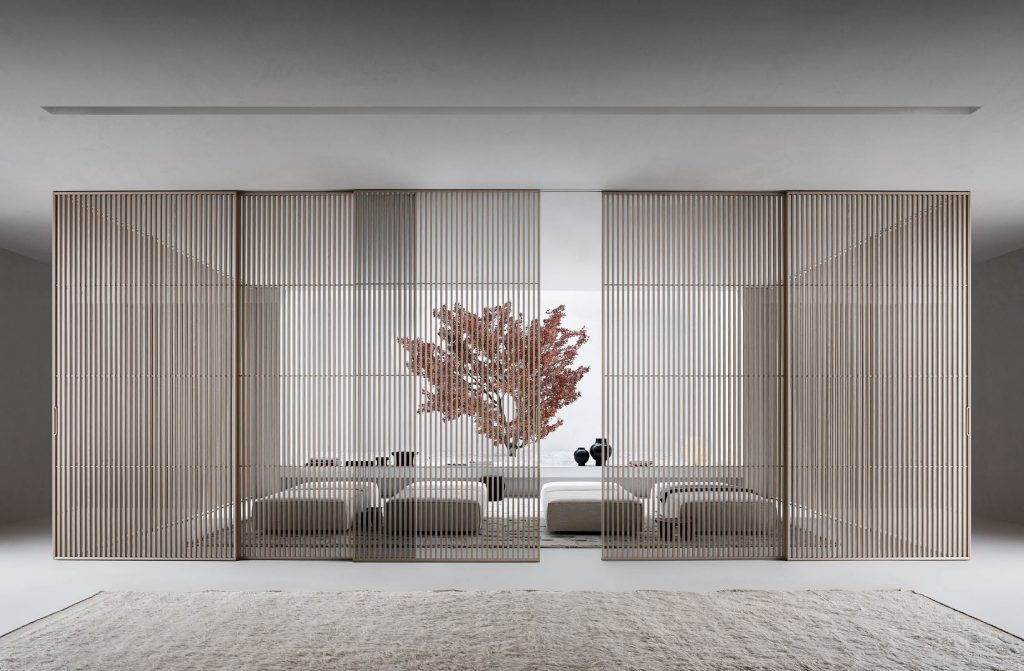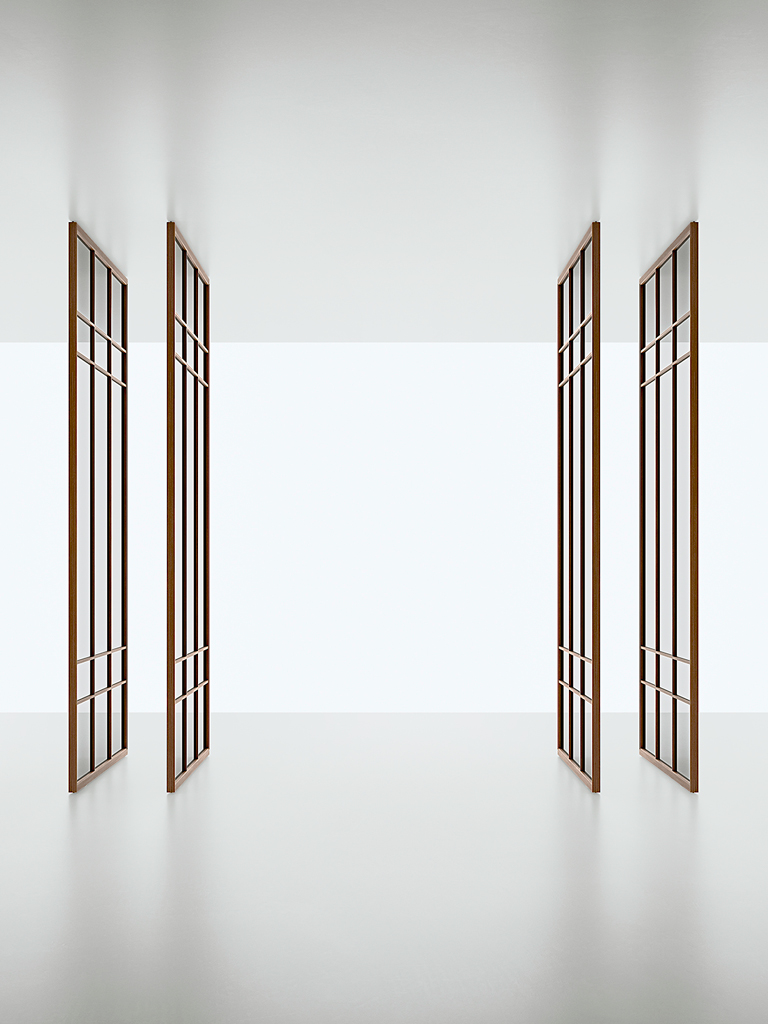Back to Modernity
Modernity according to Stefano Salis, Maria Cristina Didero, Giuseppe Lupo, and Deyan Sudjic.
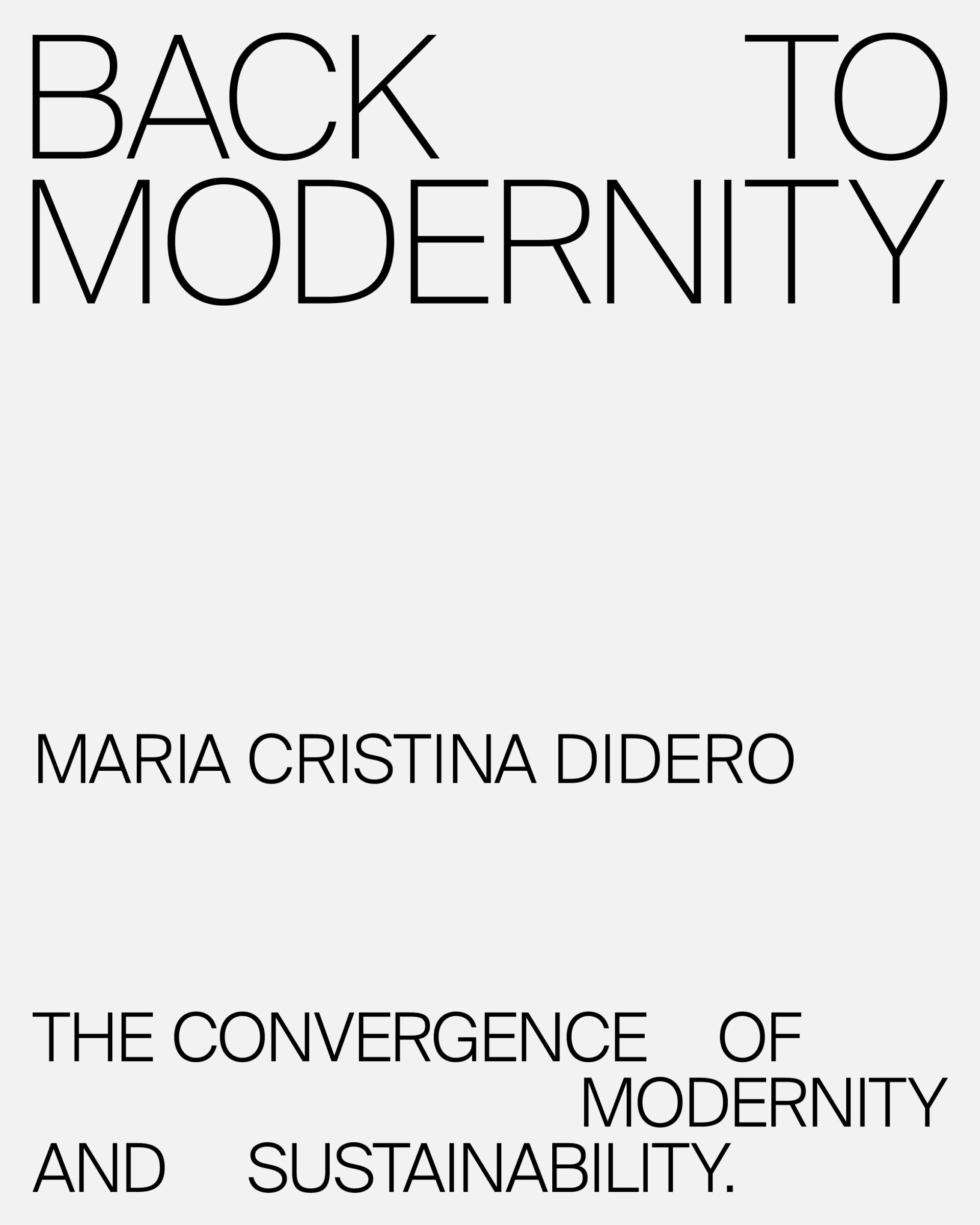
If we consider the concept of modernity according to its most contemporary interpretation, and the one most inclined toward the future, we can say without hesitating that today modernity is a synonym for sustainability. Sustainability is a synonym for sharing. And sharing means working together for a better world—for everyone. A critical theme of our time, fundamental for determining our future actions, and at the heart of proposals seeking to raise the consciousness of manufacturers and consumers in the coming years, sustainability is the word on everyone’s lips. Yet it seems that real interventions are few and our actions have minimal impact.
Not even the design world is untouched by these issues. Project, design, people’s culture—none of these areas can evade the question: we must redefine a broader notion of meaning that permeates the entire system—manufacturing means and methods, aesthetic parameters, market demands, and a mindful consumerism. Of course, our perception of the value of an object designed today is already far removed from that of the past (when beauty and ornament were the dictates and conceptual value was limited primarily to aesthetic standards). However, the profound, conscientious knowledge that our planet—and we along with it—have a serious problem means that our evaluation of a product’s goodness has changed dramatically. More responsible consumers are approaching the market: companies must be prepared to respond in kind. The problem that companies, sooner or later, are having to confront is not only ethical.
It’s that in the design world today the public is making a real, concerted demand for products that respect certain criteria, capable of substantiating their quality and legitimizing their reason for being with special qualities: style, value, durability. It’s a new sustainable modernity. And perhaps the time has come to say that companies have gotten the message. They now realize that the integrity of a product has a substantial impact also on its commercial success, on sales, on reputation, and on its ability to attract a conscientious public.
The most enlightened and advanced entrepreneurs in the sector first grasped the need for a radical change, then internalized it. Not only in manufacturing, but in all their supply chain sectors. Every single process is subjected to scrutiny and a reformation that is not a façade: these processes are embedded in the companies’ DNA. They are its present, often a continuation of the past, and certainly form the roots of a solid future. Remember, industry has not only adjusted to the market’s demands; at times it has anticipated them—with careful foresight, it even dictates tastes and trends.
In the design sector, there are already numerous designers, architects, artists, and organizations working in this direction and who have followed this path from the very beginning of their career. Indeed, for some of them, this is the fundamental inspiration that defines their work. To plan, in fact, is a verb that is inherently future-thinking. And, therefore, we must do it in an increasingly responsible way. The designer and the design firm (a product’s parents) are accountable for the myriad choices that define a product’s trajectory and must evaluate how best to manufacture it.
From the choice of materials to its overall economics, but also to “lifecycle thinking” that follows a product not just from cradle to grave but, ideally, cradle-to-cradle. Share and repurpose, reuse, rethink: this is what we need to do today. And then we must act, because there’s no time left and, perhaps, we no longer have a choice. As Greta says, “The house is on fire,” and we know it.
Words Maria Cristina Didero. talian to English translation by Laura M. Cincotta.
BIOGRAPHY
Independent design curator, author, and consultant, Maria Cristina Didero has collaborated with magazines such as Domus, Vogue Italia, L’Uomo Vogue, Flash Art, and Apartamento; she was editor-at-large of ICON Design from 2018 to 2020. Currently she is the Milan editor of Wallpaper* magazine. Maria Cristina has contributed to numerous publications, and she collaborates with many companies. She works internationally, curating exhibitions for institutions, fairs, and design-centric events. Her experience includes 14 years at Vitra Design Museum. In 2021, she was on Stefano Boeri’s curatorial team for that year’s Salone del Mobile, Supersalone, for which she developed the program of open talks. In 2022, she was nominated curatorial director of the Design Miami/ fair and presented an exhibition called “Ask Me If I Believe in the Future” at the MK&G in Hamburg.
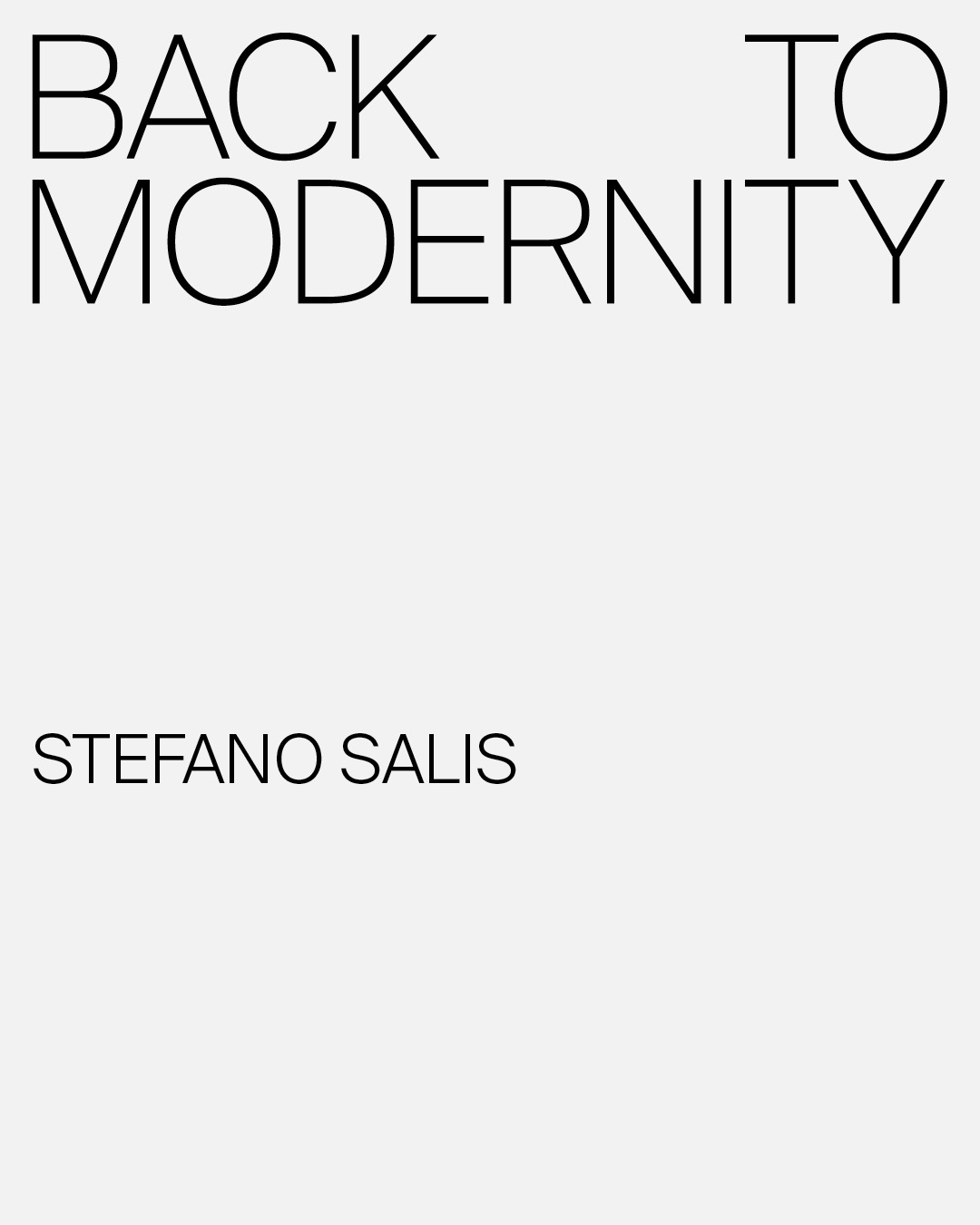
Modernity is a fascinating word: try saying it out loud, or letting it roll around your mouth. Modernity seduces and gratifies the senses; it always conveys a sense of tangible wellbeing. It reminds us that we live our time with enthusiasm, but also that we can surpass it—as lead actors. In fact, “modern” stands in direct opposition to antiquated and old. Bringing with it a sense of youthfulness of ideas and outcomes, its purpose is to see beyond the familiar horizon. It maintains a constant positive sensation. Yet, for this very reason, it is not a word to use lightly. Hardly a cureall, it brokers no fakes: it is no use pretending to be modern or innovative. Either you are or you aren’t.
Modernity is not a word, it is an attitude, an outlook. Modernity is a project of great breadth and lengthy unfolding: a collective and individual transformation that materializes as it takes place. There are therefore no marked trails, only experiments to try and paths to follow with a growing (collective and individual) consciousness, and with the new demands that the era places on designers and on the fabricators charged with the task of making them reality. Modernity is culture. It is a tool for knowing and living that continually interrogates our way of being. Modernity expresses itself through a rainbow of iridescent ideas: ideas that reveal the fallacy of the doomsayers (ever ready to predict catastrophes) and identify paths that went awry, nudging them in the right direction. To bring this concept into the design world, if we consider it no longer sustainable to plan and produce according to old models, materials, and principles—to use oftmaligned plastic as an example—we should not demonize techniques and products that, as with plastic on an industrial scale, enabled large swaths of the population to finally gain access to prosperity and ease: one of the 20th century’s definitive legacies.
Three themes guide us in the following pages: the history of modernity as a concept (in Italy in particular), its specific manifestation in the design world, and a glimpse of the future that awaits us. Giuseppe Lupo, Deyan Sudjic, and Maria Cristina Didero, undisputed experts in the field, share what it means to think about these notions from their own perspective, drawing up a map of meaning to guide our awareness.
If terms such as wellbeing, innovation, sustainability, but also confusion, misunderstanding, turning point, and change of course make their way into these essays, they are evidence of the critical spirit that the concept demands: the very zest of the conversation. For everyone who manufactures, buys, uses, and lives design (and not only design), the artifacts of this transformation provide a new opportunity to reinterpret roles and destinies. For these individuals the word modernity should not seem unfitting. Because modernization is not only made by speculating on the future, but also from memory and passion. It is grounded in respect for things that are wellmade, with quality and love of craft, which are timeless values. In the enduring attention to details. In mindfully surrounding ourselves with objects that speak to our identity, or rather, that make it manifest.
In short, to be modern, to be “of our time,” has never been a matter of owning the latest tech gadgets. It is not smugly reaping the rewards of scientific discoveries that up until a few decades ago were unimaginable. It is not being (falsely) social merely because of fashion’s dictates. Being modern is having an attitude of understanding and empathy with what is around us, with what we need to belong in a context: our own. The new ways of living that will certainly emerge are the great opportunity awaiting those who reckon with the aspects of today’s social and cultural experience that demand different solutions for new problems and innovative solutions for those that resurface. The great philosopher Zygmunt Bauman wrote in Liquid Modernity: “one feels free in so far as the imagination is not greater than one’s actual desires, while neither of the two reaches beyond the ability to act.” Imagination, actual, ability to act, desire: we navigate within this stream of words with the knowledge that yesterday’s limits are today’s realities, tomorrow’s possibilities are our desire to design, tirelessly, a new vocabulary of words, things, and even people. These are the rites of a secular liturgy that speak to our spirit in surprising and authentic ways. Modernity is not a destination, it is the road just ahead of us.
Words Stefano Salis. Italian to English translation by Laura M. Cincotta.
BIOGRAPHY
Born in 1970 in Sant’Antioco in Sardinia, Stefano Salis is a journalist for Il Sole 24 Ore where he edits Commenti, the opinion and editorial page. In the newspaper’s Sunday culture insert, he writes frequently on bibliophilia, publishing, art, design, and literature. He has led conferences on these topics around the world and taught university courses on journalism at the Università di Milano and the Università Cattolica. Stefano’s contributions in book form include curating (with Barnaba Fornasetti) Piero Fornasetti: Certi paraventi sono stati disegnati due volte (pub. Henry Beyle). His latest book is Sulla Scacchiera (pub. Franco Maria Ricci). Pending publication is a book on Roger Caillois’ stones (Franco Maria Ricci). He is on the advisory committee of FMR magazine.
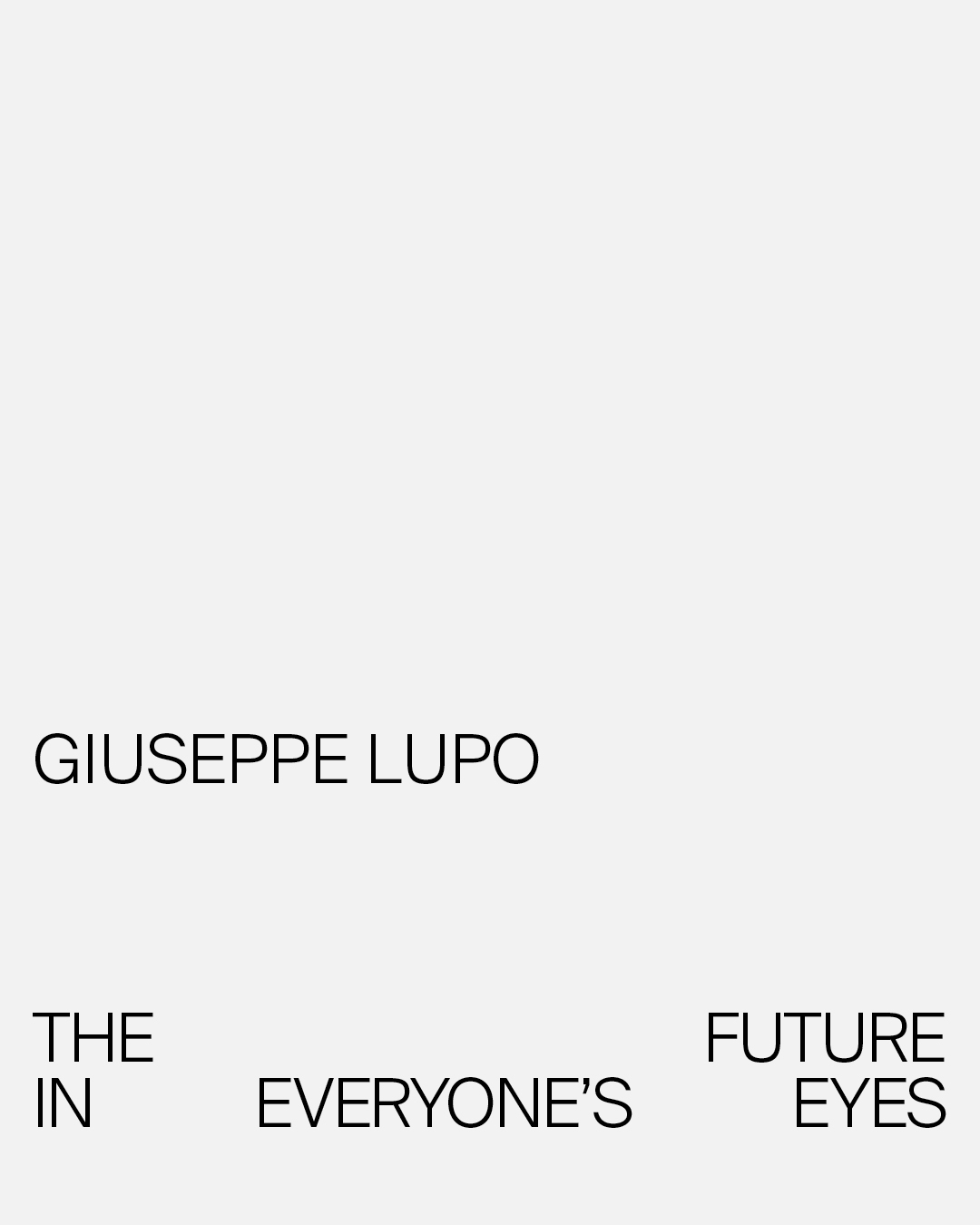
When we say the word modernity, today as in the past, our thoughts run straight to the economic and societal transformations that took place in the 1940s and 1950s, when Italy’s transition from an agricultural civilization to a civilization of machines chiseled on our country its industrial face. A development of epic proportions, it represented a rupture with the past. Economic impacts aside, this revolution marked a point of no return: reshaping standards for individual behavior, the anthropological fabric of families and social groups, and even the concept of urban and suburban landscapes.
In fact, no one today thinks of the 20th century independently of the ideological issues that arose with the advent of technology. What we call modernity are instead its repercussions, we measure the ripple effects that everyone could see with their eyes. Effects that became concrete through the proliferation of massproduced objects: from home furnishings to electrical appliances, from cars to clothes. Heirs of an ancient craftsmanship, in the hands of the factories they were incentivized and enhanced through design, thus creating the unmistakable style now branded Made in Italy. In just over 15 years, Italy radically renewed its image in the world’s eyes. From a poor, defeated nation, the homeland of emigrants, it became the cradle of the good life, a school of refined elegance. This groundbreaking evolution, while instigating the spread of consumerism and the consolidation of mass culture (two phenomena generally derided by the intelligentsia), serendipitously met the daily needs of a population that, up until the aftermath of WWII, was unfamiliar with the concept of stable wellbeing. Indeed, much of the nation’s citizens subsisted in precarious conditions, not to mention outright poverty.
The expression “the 20th Century,” therefore, stands for industrial modernity, part and parcel with its farreaching implications for politics, culture, and philosophical and economic discourse. The swift consolidation at the technological level, inevitable and necessary for a country seeking to establish itself on the West’s playing field, was onerous. Additionally problematic was the reaction to change for ordinary citizens and the cultural elite alike. Both experienced a sense of unease and a deep rift with the old world, along with a general distrust of the new one. Thinkers and intellectuals sought to address these problems, recording their fluctuations. As such, for example, literary works dealing with these questions can be seen as the barometer of an antimodern attitude. As opposed to a candid affirmation of modernity, this attitude is predominantly corrosive and severe in its judgments, having sunk its roots into the ideological substrate of a complicated century more dedicated to conflict between societal models than to dialogue and integration. Herein lies a paradoxical contradiction.
On the one hand stands the intellectual front, that has often wrongly interpreted industrialization’s consequences, construing them skeptically or negatively, as if the propagation of consumer goods were a strategic error or a kowtowing to capitalism’s logic. On the other hand is the average person—families of blueand whitecollar workers, the Italian lower and middle classes— to whom the factory with its products gave the opportunity to attain a higher standard of living, to feel part of something much larger than individual destiny. A breath of fresh air, that circled the world and filled everyone’s eyes with the future.
Words Giuseppe Lupo. Italian to English translation by Laura M. Cincotta.
BIOGRAPHY
Born in Lucania, Giuseppe Lupo lives in Lombardy, where he teaches Theory and History of Modernity in Literature at the Università Cattolica in Milan. In 2018, he won the Premio Viareggio with Gli Anni del Nostro Incanto and, in 2011, the Selezione Campiello prize with L’Ultima Sposa di Palmira. Giuseppe is the author of numerous other novels, including L’Americano di Celenne, La Carovana Zanardelli, Viaggiatori di Nuvole, L’Albero di Stanze, Breve Storia del Mio Silenzio, and Tabacco Clan (2022). His most recent book is La Modernità Malintesa (2023). He has published many essays on the culture of the 20th century and industrial modernism, and he collaborates with the cultural sections of Il Sole 24 Ore.
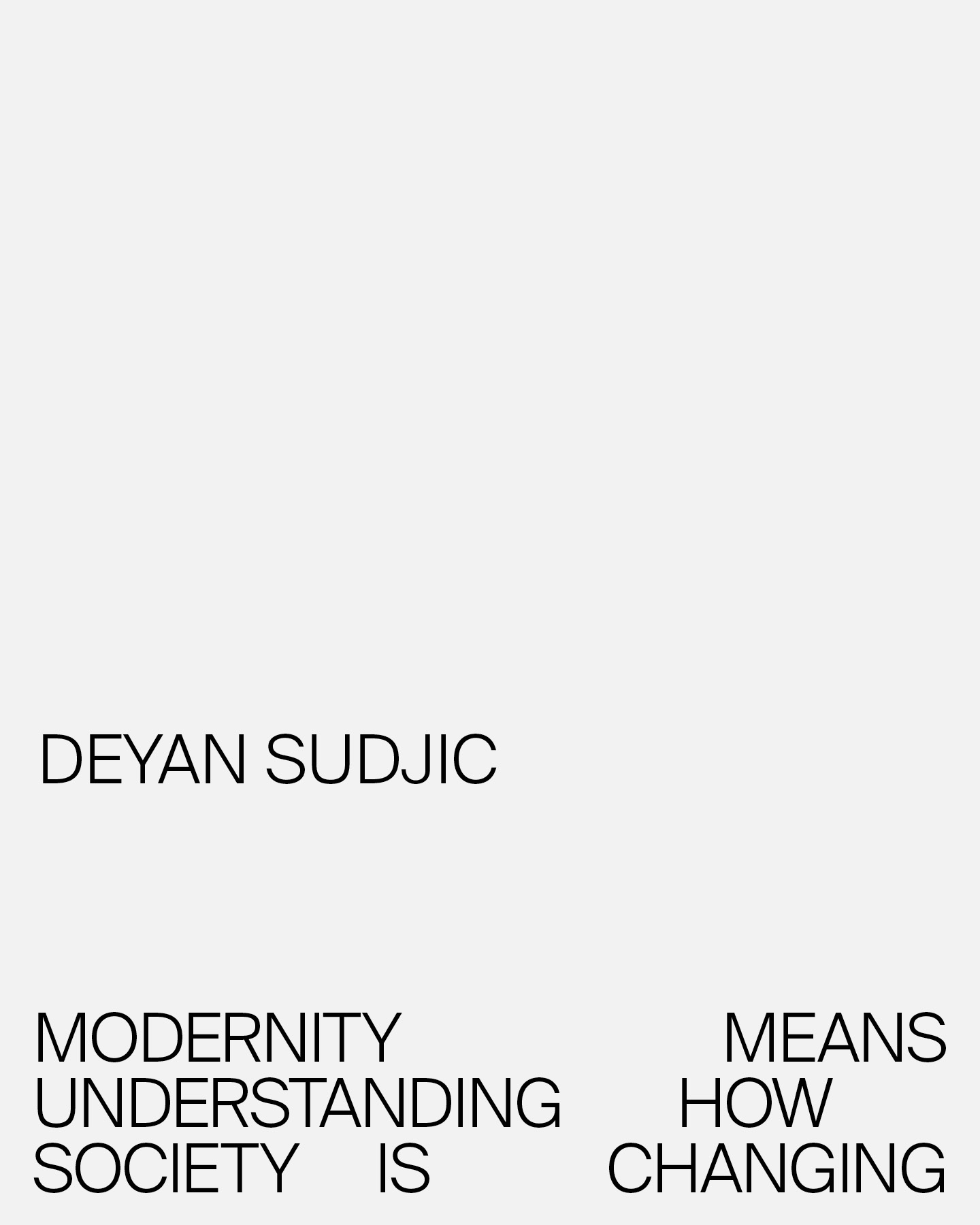
Andy Warhol pushed Modern Art into the history books to make way for the less ideological alternative of Contemporary Art in the 1960s. Modern Architecture was declared dead in 1972 by the post-modernist critic Charles Jencks. But despite the fun post-modernists had designing hotels for Disney shaped like giant swans, and using prefabricated concrete to build blocks of social housing in Paris suburbs that parodied the Roman Colosseum, we have found it impossible to let go of the idea of modernity. At one level the moral crusade that modernism once represented has been replaced by a nostalgia for the certainty that ‘modern’ once represented. It is a nostalgia that can be seen in the fascination that a generation of hipsters have for brutalist architecture and mid-century modern furniture. You can see a reflection of that in the tribute Jony Ive’s work for Apple paid to Dieter Rams consumer electronics at Braun, and the continuing importance of the work of the modernist pioneers from Jean Prouve to George Nelson have for the furniture industry.
Its not hard to see the attraction of design that stands the test of time. There was something special about the work of both Rams, and of Charles and Ray Eames that has made it last. Look at the architecture of the Eames house in Santa Monica, made from off the shelf industrial components, that looks as fresh and new now as the day that it was completed in 1949, unlike the built-in obsolescence of the kitchen appliances, still in situ, that they had no choice but to use. There is another less sentimental aspect of the appeal of modernity which is perhaps more significant. The social media explosion, and the universal adoption of the smartphone, delivered just 16 years ago by Steve Jobs, were initially portrayed as the next steps in the evolution of modernity.
They have instead had the unintended consequence of contributing to pushing the world back toward a premodern condition. Twitter was promised to be about individual empowerment, but threatens to take us back to the Middle Ages with all its intolerance and the return of ancient superstitions about vaccines and prejudices against outsiders that have reappeared in a new age of unreason. We need to find new ways of using technology to restore some of the essential qualities and freedoms of modernity. To be modern is not to choose one style over another. It is to find ways to put technology to work for people. It is to understand how society is changing. It is about research and evidence and reason and understanding. Terence Conran used to say that design is intelligence made visible.
Technology does not stay still. Modernity was once about cantilevered tubular steel chairs. Buckminster Fuller rightly mocked the Bauhaus modernists for worrying only about what they could see in their world, the design of taps and faucets and not engaging with the pipes and the engineers who supplied them with water. The British critic Reyner Banham even in the 1960s was predicting a future in which furniture disappeared altogether. To an important extent we are in a period when objects have dematerialised as he suggested that they would. We must look for new ways to be modern, as well as modern ways to find the comfort we have always looked for in our physical possessions and their way of reflecting our lives and our memories.
Words by Deyan Sudjic.
BIOGRAPHY
Deyan Sudjic is a critic and writer. He edited Domus in Milan, was the director of the Venice architecture biennale, and has curated exhibitions in London Istanbul, Copenhagen and Seoul on subjects ranging from Stanley Kubrick to Zaha Hadid and Paul Smith. His book the Language of Things has been published in ten languages. He is the editor of Anima a new magazine on design launched in April 2023
